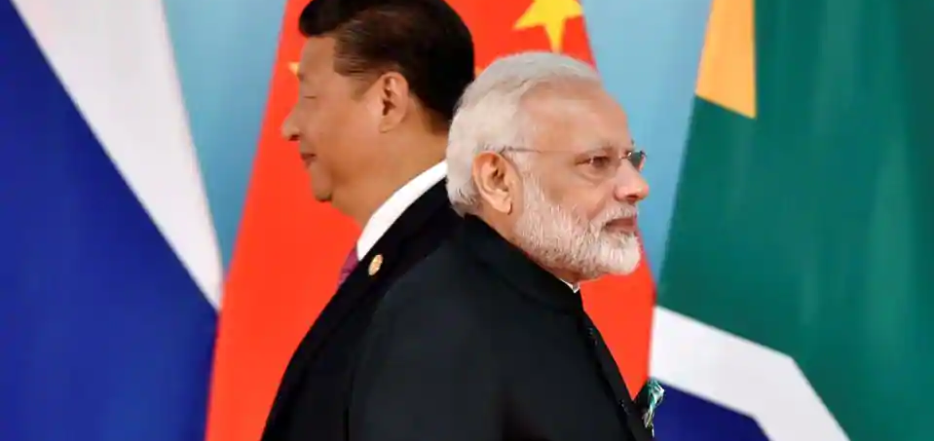Opinions

Globally, a ripe moment for India, writes Baijayant ‘Jay’ Panda
Author - Baijayant ‘Jay’ Panda
Posted on - 28 May 2020
Image Source - Suspicions about China’s actions and respect for Indian abilities have grown(REUTERS)
Downloadables
Twenty years ago, as a new Member of Parliament participating in international Track-II events, two themes made a big impression on me. The first was how much influence China had managed to acquire globally. At dozens of gatherings, I saw influential personalities from politics, diplomacy, think-tanks, and Fortune 500 corporations speak emphatically in favour of China. The second theme was many commentators saying they wished India would step up and play a larger role in geopolitics, but also bemoaning that we had a long way to go.
Indeed, we did. For in the preceding two decades, from 1980 until the turn of the century, China had transformed itself in comparison to India. From an economy with per capita income similar to ours, its GDP had already become nearly thrice India’s size, eventually to become five times larger. That growth in wealth afforded it much more military and economic clout around the world.
But over the years, there have been big changes in both these themes, in opposite directions. These have only intensified in recent months. On the one hand, during the coronavirus pandemic, the number of nations that are unhappy with China and suspicious of its motives has grown exponentially. On the other hand, the goodwill for India and its actions, and respect for its capabilities, have grown equally sharply. Our path forward requires understanding both these trends.
It was a dozen or so years ago that I first ran into western companies complaining about doing business in China. After years of praising the ease of doing business there, and contrasting it with India, they had begun sounding off about Chinese partners appropriating their intellectual property rights and unexpectedly turning into competitors.
China used its growing wallet to push its strategic aims around the world, using “aid” funding in a uniquely new manner. While traditional aid by developed nations consisted of subsidised, long-term, low-interest funding, Chinese projects, like those under the One Belt One Road (OBOR) came with high commercial rates of interest. At least one such project, the Hambantota port in Sri Lanka, has been directly taken over by China after it defaulted on those usurious repayments.
China also became increasingly assertive in geopolitics, such as in its South China Sea disputes with neighbours and others. Some commentators sensed hubris in this, and a shift away from the path of Deng Xiaoping, the architect of China’s economic prowess, who had advised his successors to “maintain our position, meet challenges calmly, hide our capacities, and bide our time, remain free of ambition, never claim leadership.”
Gradually, diplomats and Track-II delegates began using different terminology in reference to China. From the turn-of-the-century phraseology that the rise of China was inherently beneficial to the world, within a decade, the tenor shifted to an insistence that it must play by the rules of global engagement from which it had itself benefited.
With the growing tensions over trade in recent years, and the pandemic this year, the wheel has turned further. Last week, a White House report titled The US Strategic Approach to the People’s Republic of China did away with all previous diplomatic euphemisms and asserted it “is responding to the Chinese Communist Party’s direct challenge by acknowledging that the two powers are in ‘strategic competition’.”
The US is not alone, as many nations around the world have taken a stand demanding China come clean about the origins of the coronavirus and the beginnings of its spread in Wuhan. After initially rebutting such demands, China has acceded to an inquiry by the World Health Organization. But at the same time, it has lashed out against Australia, one of the lead signatories, with punitive economic measures.
China has also taken steps in its own immediate neighbourhood that are raising eyebrows. India, too, is experiencing yet another face-off across the Line of Actual Control (LAC), in Ladakh. To be sure, the border dispute has not seen a shot fired in anger in decades. Yet, recent years have seen a series of such incidents, the last one being at Doklam in 2017. India has demonstrated that, while remaining peaceful and reasonable at all times, it is capable of being resolute in defending its territory.
All these developments present opportunities for India, which has been gaining respect in the world’s eyes since the Atal Bihari Vajpayee era, and more rapidly in recent years. This has defence aspects, of course, including the acquisition of equipment, technology, production, and joint exercises.
However, the economic aspect will be crucial. And whatever your views on India’s ~20 lakh crore economic stimulus, the policy reforms built into it are the key. Making available large chunks of land, rejigs in labour and other laws, and especially opening up all sectors to private investment are what India has long needed.
As China was the latest to demonstrate, it is far, far easier to win friends and influence nations with a bigger wallet. India is set to follow the same path, without the hubris.

